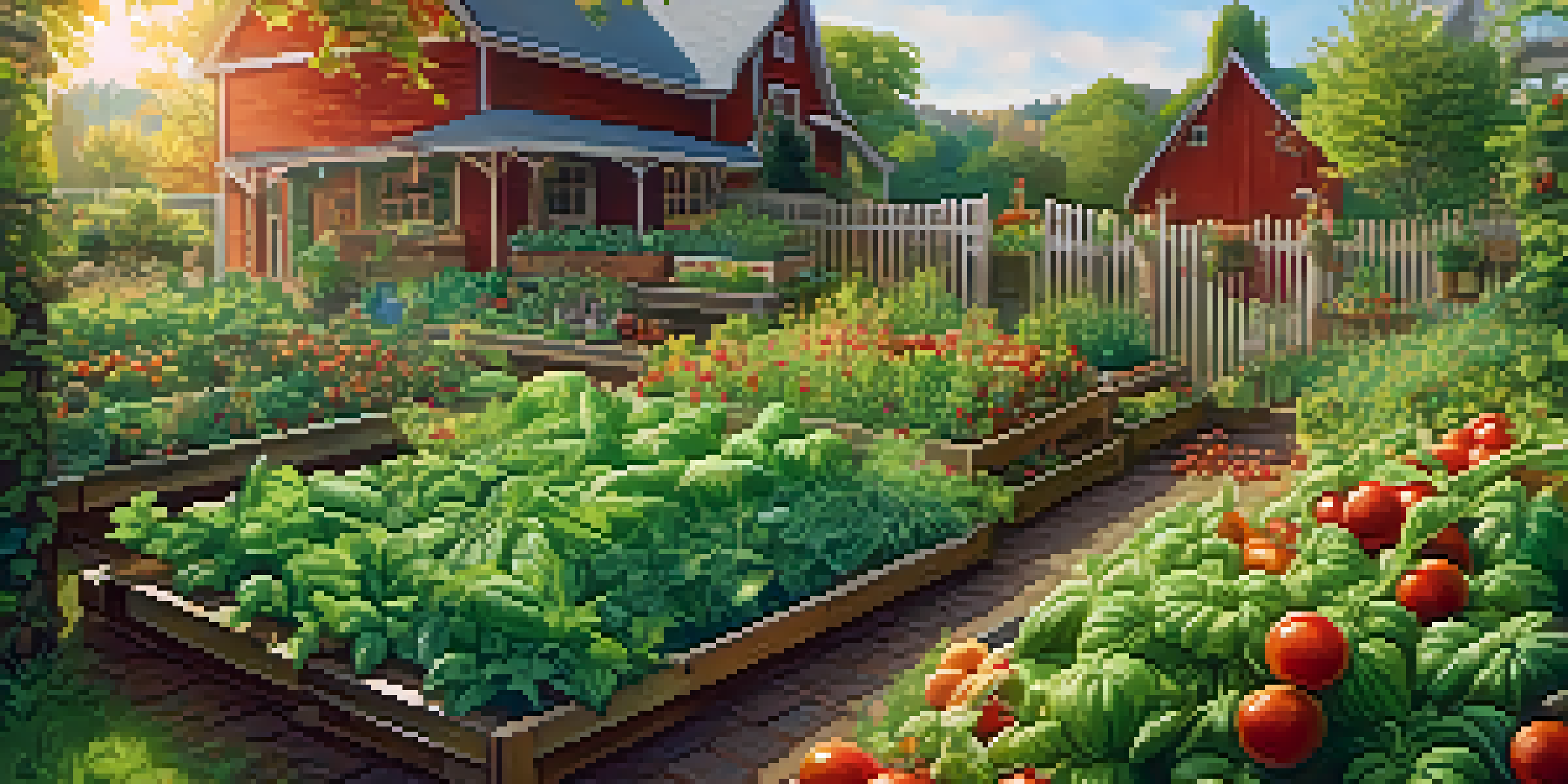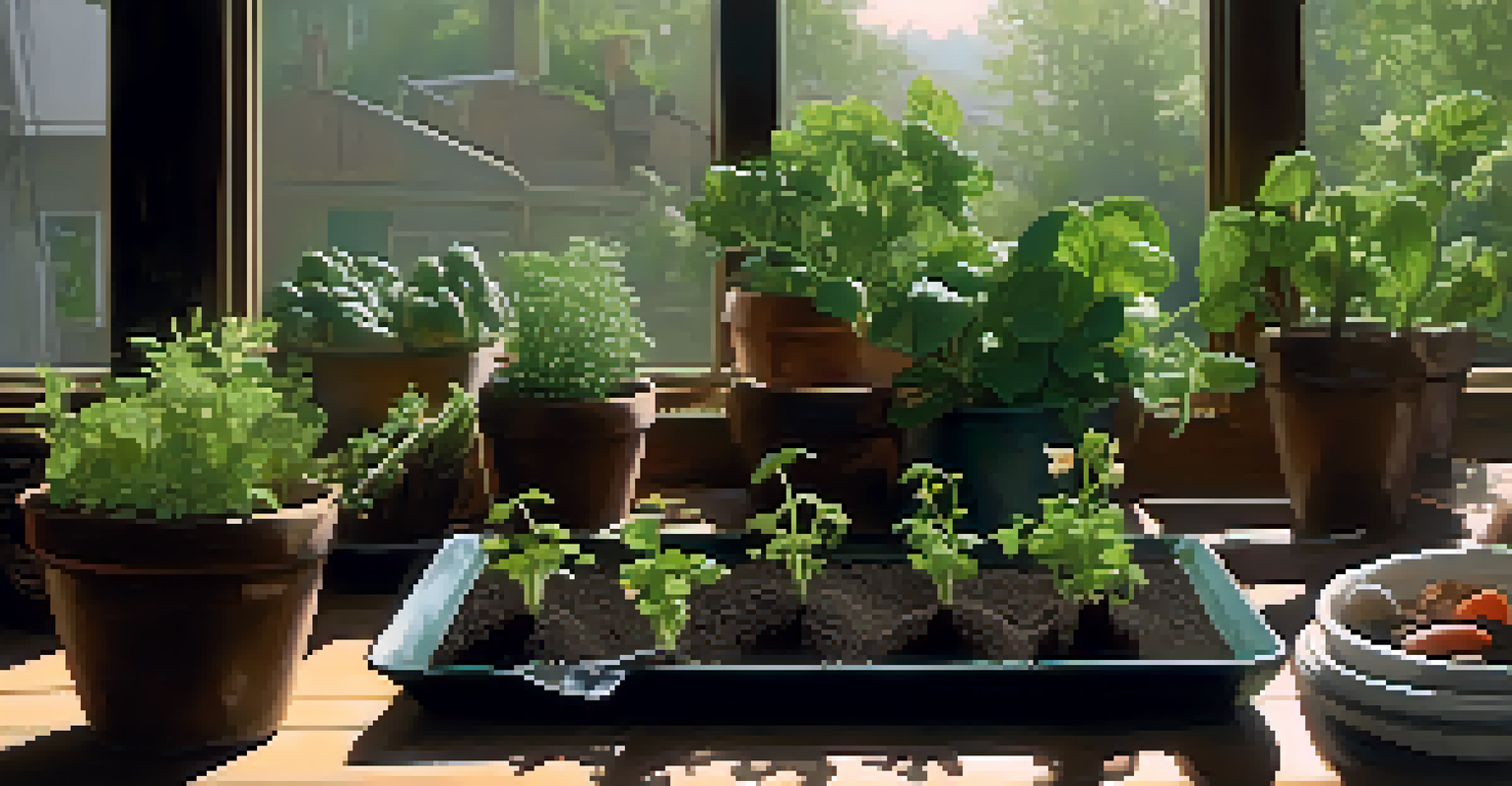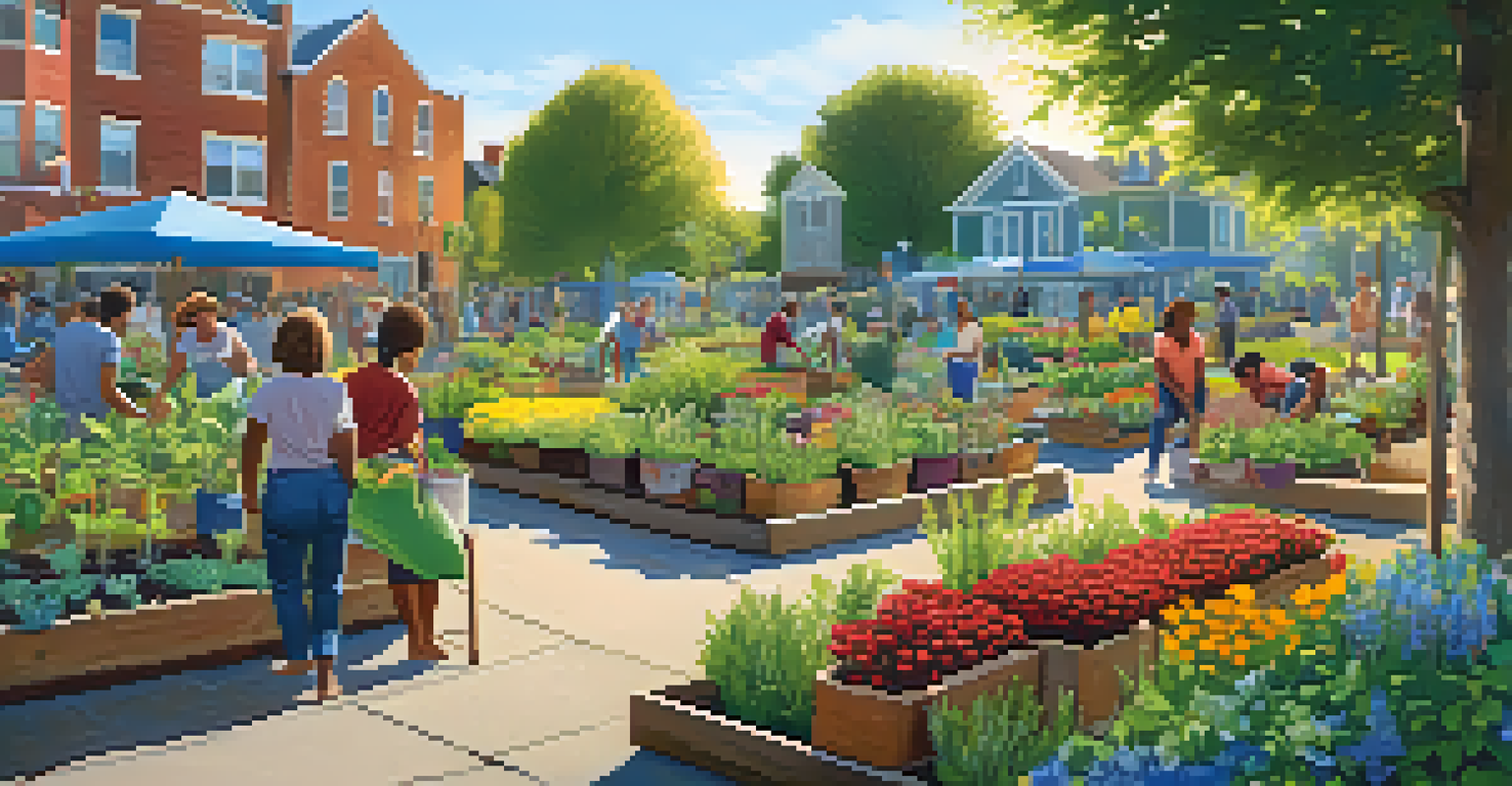Incorporating Edible Plants into Your Sustainable Garden

Understanding the Benefits of Edible Plants
Incorporating edible plants into your garden is a great way to enhance sustainability while also providing food for you and your family. These plants not only produce fresh ingredients for your meals but also contribute to biodiversity in your garden. By growing your own food, you decrease your reliance on store-bought produce, which often involves heavy packaging and transportation costs.
The greatest gift of the garden is the restoration of the five senses.
Moreover, edible plants can attract beneficial insects and pollinators, creating a healthier ecosystem in your backyard. For example, flowering herbs like basil and dill can bring in bees, which are essential for pollination. This symbiotic relationship not only supports the environment but also improves the yield of your garden.
Additionally, many edible plants are quite resilient and can thrive in diverse conditions, making them ideal for sustainable gardening. By selecting native and drought-resistant varieties, you can reduce water usage and maintenance efforts. This way, you can enjoy the fruits of your labor while being kind to the planet.
Choosing the Right Edible Plants for Your Space
When selecting edible plants for your garden, consider your local climate and the space you have available. For instance, if you live in a warmer region, tomatoes and peppers might thrive, while cooler areas may be better suited for leafy greens like kale and spinach. Assessing your environment can prevent frustration and help you make the most of your garden.

Another factor to consider is the size of the plants. If you're working with limited space, opt for compact varieties or even vertical gardening options. Herbs like chives and parsley can grow well in small pots on a balcony, allowing you to enjoy fresh flavors without needing a large garden.
Grow Edible Plants for Sustainability
Incorporating edible plants in your garden not only provides fresh food but also enhances biodiversity and reduces reliance on store-bought produce.
Lastly, think about how you plan to use these plants in your kitchen. Choosing plants that complement your cooking style can make your garden even more rewarding. For example, if you love making fresh salads, consider growing a mix of greens, tomatoes, and cucumbers to create your culinary masterpiece.
Creating a Balanced Ecosystem with Companion Planting
Companion planting is a gardening technique that involves growing different plants together for mutual benefits. For instance, planting basil alongside tomatoes can enhance their growth while also deterring pests. This method fosters a balanced ecosystem and promotes healthier plants through natural interactions.
To forget how to dig the earth and to tend the soil is to forget ourselves.
By understanding which plants thrive together, you can create a thriving, sustainable garden. For example, marigolds can repel harmful nematodes and insects, making them great companions for various edible plants. This not only reduces the need for chemical pesticides but also supports the overall health of your garden.
Incorporating companion planting can also maximize your space and yield. By layering plants with different growth habits, such as tall sunflowers sheltering low-growing herbs, you can create a more productive garden. This strategy not only enhances biodiversity but also encourages a more resilient gardening approach.
Utilizing Permaculture Principles in Your Garden
Permaculture is a design philosophy that focuses on creating sustainable and self-sufficient agricultural ecosystems. Implementing permaculture principles in your garden can help you effectively integrate edible plants while minimizing the need for external resources. This approach encourages you to observe and mimic natural ecosystems, leading to a more harmonious garden.
For example, creating zones in your garden can help you manage your space effectively. By placing high-maintenance plants closer to your home and less demanding plants further away, you can save time and effort. This allows you to focus your energy where it's needed most and enjoy a more productive garden.
Choose Plants for Your Environment
Selecting the right edible plants based on your local climate and available space can lead to a more rewarding and productive gardening experience.
Additionally, permaculture advocates for using waste materials, such as kitchen scraps, to enrich your soil. Composting not only reduces waste but also provides valuable nutrients for your edible plants. This closed-loop system fosters a sense of sustainability and encourages you to take an active role in your gardening journey.
Incorporating Native Plants for Biodiversity
Using native edible plants in your garden is a fantastic way to promote biodiversity and support local ecosystems. Native plants are adapted to the specific climate and soil conditions of your area, making them more resilient and easier to grow. They also provide essential habitat and food sources for local wildlife, including birds and beneficial insects.
For instance, planting native berries like serviceberries or elderberries can offer delicious snacks while attracting pollinators. These plants often require less maintenance and fewer resources, which aligns perfectly with the sustainable gardening ethos. By choosing native varieties, you're not just enhancing your garden; you're also nurturing the local environment.
Moreover, incorporating native plants can create a beautiful and diverse landscape. The unique colors and textures of these plants can add visual interest to your garden while also showcasing the natural beauty of your region. This approach allows you to create a vibrant space that supports both your culinary needs and the surrounding ecosystem.
Maximizing Yield with Seasonal Planting
Seasonal planting is a key strategy for maximizing the yield of your edible garden. By planting crops that thrive in specific seasons, you can ensure a continuous supply of fresh produce throughout the year. This method not only helps you make the most of your garden but also allows you to enjoy a variety of flavors and textures.
For example, early spring is a great time to plant cool-season crops like peas and lettuce, while summer is ideal for heat-loving plants like squash and beans. By understanding the growing seasons in your area, you can create a planting schedule that keeps your garden productive and diverse.
Maximize Yield with Smart Planting
Utilizing seasonal planting and companion planting techniques can help you maximize yield while fostering a balanced ecosystem in your garden.
Additionally, incorporating succession planting can help you stagger your harvests and extend your growing season. By planting new seeds or seedlings every few weeks, you can enjoy a steady supply of fresh produce without overwhelming your kitchen. This strategy not only maximizes your yield but also keeps your meals interesting and seasonally inspired.
Maintaining Your Sustainable Edible Garden
Maintenance is essential for keeping your sustainable edible garden thriving. Regular tasks like watering, weeding, and harvesting can significantly impact the health and productivity of your plants. By developing a routine, you can ensure that your garden continues to flourish throughout the growing season.
One of the keys to successful maintenance is practicing organic gardening techniques. This means avoiding chemical pesticides and fertilizers in favor of natural alternatives. Techniques such as crop rotation and mulching can help improve soil health and reduce pests while promoting a vibrant ecosystem.

Lastly, don't forget to enjoy the fruits of your labor! Regularly harvesting your produce not only encourages continued growth but also allows you to savor the flavors of your garden. Sharing your bounty with friends and family can create a sense of community and connection, reinforcing the joy of sustainable gardening.